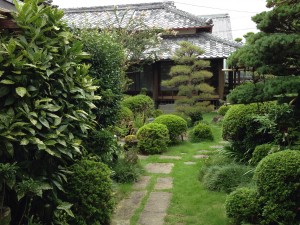Last time we discussed how to deal with drought by picking the correct plants and using best practices to keep your garden healthy.
Today we are going to look at ways to work with around a drought by using pre-existing water, so to speak. The two main ways to go around using the hose is through the use of rain barrels and using gray water.
Rain Barrel
![rain-barrel[1]](https://ylslandscapecontractor.com/wp-content/uploads/2015/01/rain-barrel1-255x300.jpg) A rain barrel is exactly what its name is, a barrel that collects rain water. People had used them for years as a way to have viable water available before there was city water. They were usually used to supplement well water. Basically you stick a barrel in the yard and when it rains the barrel fills up. As home design improved and gutters were added homeowners would place the barrel under a down spout so the water would be directed into the barrel increasing the amount of water caught.
A rain barrel is exactly what its name is, a barrel that collects rain water. People had used them for years as a way to have viable water available before there was city water. They were usually used to supplement well water. Basically you stick a barrel in the yard and when it rains the barrel fills up. As home design improved and gutters were added homeowners would place the barrel under a down spout so the water would be directed into the barrel increasing the amount of water caught.
And this is how it is done today. You can purchase a premade barrel or a do-it-yourself kit from most home improvement or hardware stores. The cost starts at about $50.00 and go up from them depending on the sophistication of the system. The Virginia Extension Office also offers workshops to help you make your own.
Not only will this cut your water bill the water has not been chemically treated so it is better for your garden and for washing your car. Another side benefit is the barrel cuts down on run off so our streams and bays stay cleaner! It is definitely a win-win!
Grey Water
This is a more complicated way to save water and has been somewhat controversial. Grey water is water that has been previously used in the home and is being reused. It differs from Black water, which is sewage water. Grey water can come from the shower, the washing machine or even the dish washer. In a very simplistic form people put a bucket in the shower will the water is heating up and then use that to flush the toilet. Even that saves some water.
More often, however, it is the washing machine that is the source of grey water. The machine is hooked to a drip irrigation system and is used to water the landscape. Because the washing machine hose is not hooked directly into the homes plumbing it can be more easily re-routed. It usually requires a permit and professional installation and a commitment to use environmentally friendly detergent but in a high drought area the use of grey water can be very beneficial for both the homeowner and the community.
